Kicks include all attacks performed with the legs or feet. Since the muscles of the leg are much larger and stronger than the muscles of the arm, kicking techniques are generally more powerful than hand techniques. They also have a greater attack range. However, kicking does have its drawbacks. Since the leg is bulkier than the arm, kicks tend to be a little slower. Also when kicking, the foot usually has to travel a further distance to reach its target, again sacrificing speed. Finally, kicks leave the Karateka on only one leg, compromising balance. For these reasons, punches tend to be viewed more favourably in Shōtōkan. Keri can be separated into 4 categories:
1.Basic Kicks
Basic kicks are simply those kicks that are practiced most often in Shōtōkan. These kicks are standard and are practiced almost every class. These kicks are usually learned right at the beginning of one's training. They are fairly simple and don't require too much flexibility.
| Japanese | English |
|---|---|
| Mae-geri | front kick |
| Yoko-geri-keage | side snap kick |
| Yoko-geri-kekomi | side thrust kick |
| Ma-washi-geri |
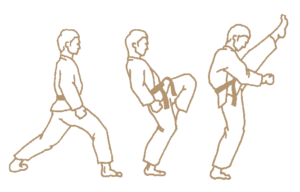
Mae-geri-keage.
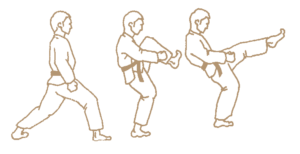
Mae-geri-kekomi.
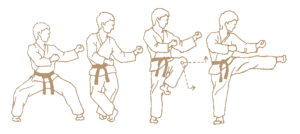
Yoko-geri-keage.
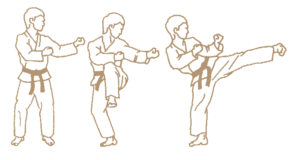
Yoko-geri-kekomi.
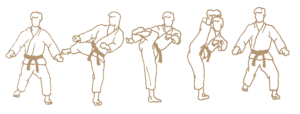
Extensive round house kick (Mawashi-geri).
2.Advanced Kicks
Advanced kicks are those kicks that are practiced much less often, due to their difficulty and risky nature. Advanced kicks usually leave the kicker in a very precarious position. Although use of these kicks can be very dangerous, they can often be very deceptive. These kicks are extremely difficult to perform, requiring excellent speed, timing, and balance skills. Without proper flexibility, theses kicks cannot be performed at all.
| Japanese | English |
|---|---|
| ushiro-geri | back kick |
| ura-mawashi-geri | reverse roundhouse kick |
| mikazuki-geri | crescent(moon) kick |
| tobi-geri | jump kick |
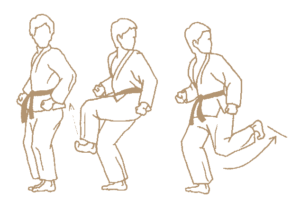
Ushiro-geri-keage at mid-level section.
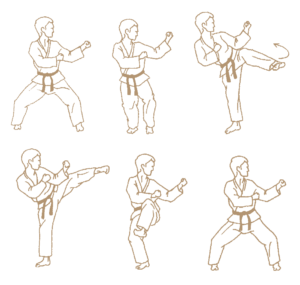
Ura-mawashi-geri.
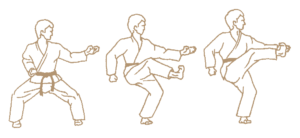
Mikazuki-geri.

Mae-tobi-geri by kicking with the same leg.
3.Advanced Leg Attacks
These advanced techniques are executed with the foot, but are usually not considered as kicks in the conventional sense. They are mainly used to damage an opponent's legs or to break an assailant's balance. All targets for these attacks are below hip level (gedan).
Target is below hip level.
| Japanese | English |
|---|---|
| fumi-komi | thrusting step (stomping kick) |
| ashi-barai | foot sweep |
| nami-gaeshi (nami-ashi-geri) | returning wave (wave -leg kick) |
4.Non-Traditional Kicks
These kicks are not exactly mainstream Shōtōkan. Very few dojo will practice them. Many of these kicks are too difficult to control and only end up damaging your partner in class or competition. The use of some of these kicks can even result in injury to your own foot or leg. These kicks cannot be found in Shōtōkan Kata or traditional Kumite and, therefore, are not really considered as part of the modern Shōtōkan system.
| Japanese | English |
|---|---|
| ushiro-ura-mawashi-geri | spinning back reverse roundhouse kick |
| ura-mikazuki-geri | reverse (inside) crescent kick |
| otoshi-kakato-geri | dropping heel kick (axe kick) |
| tsumasaki-geri | tip of toes kick |
| sune-geri | shin kick |
| kin-geri | groin kick |
| naname-geri | oblique kick |
*Please note that in a compound word, where keri does not come first, its pronunciation and writing change slightly, becoming geri.



